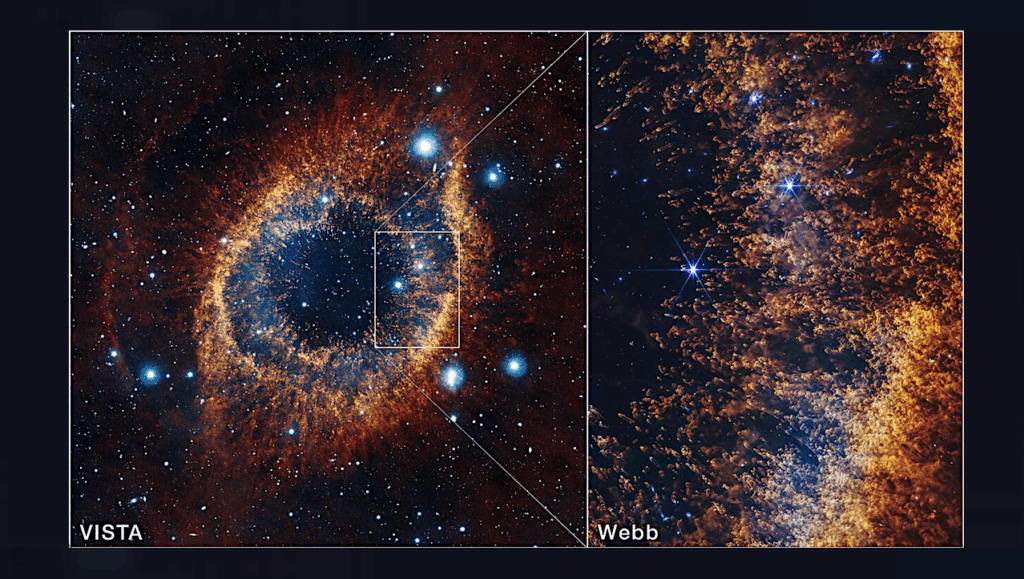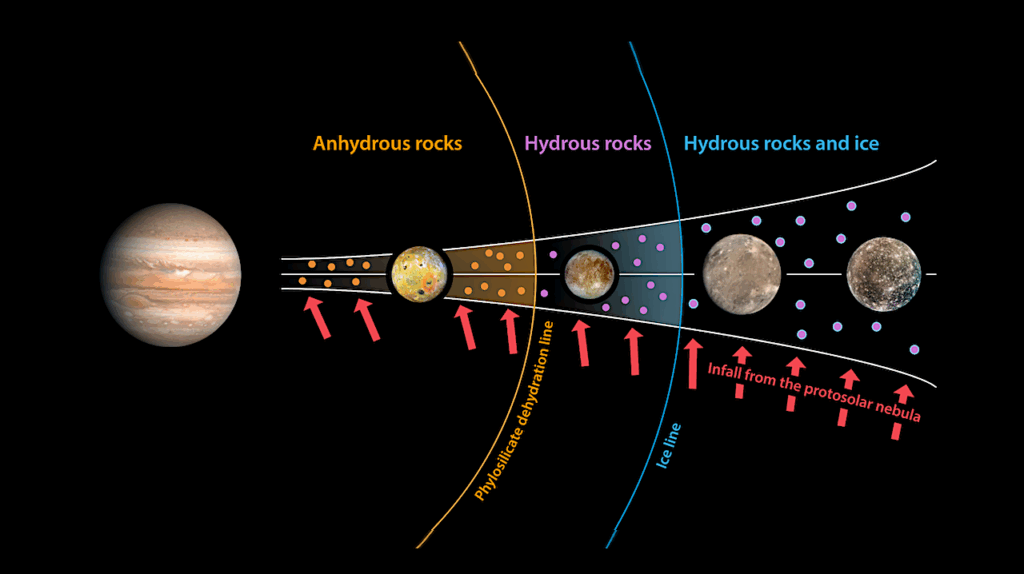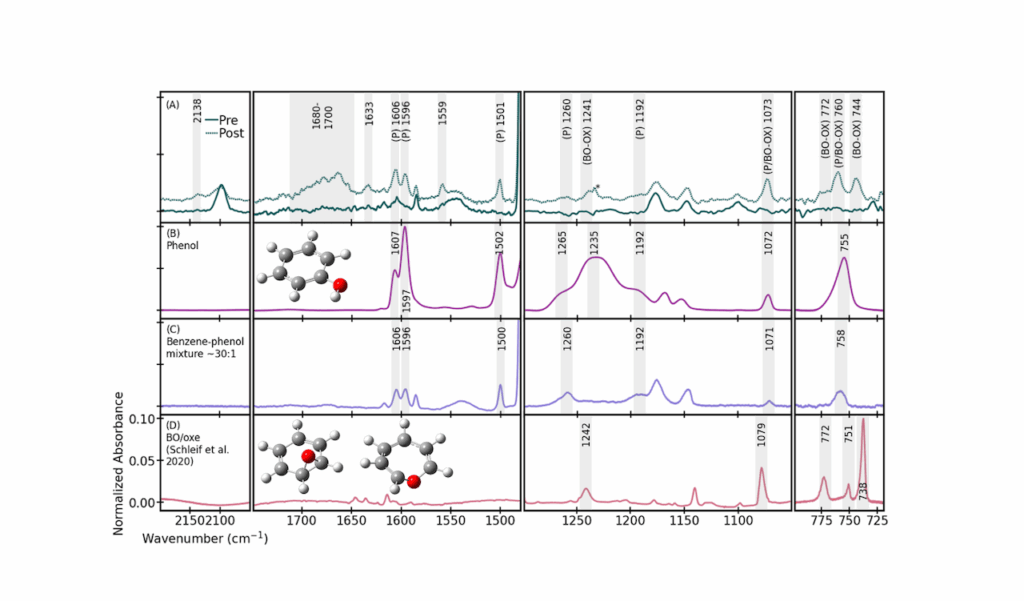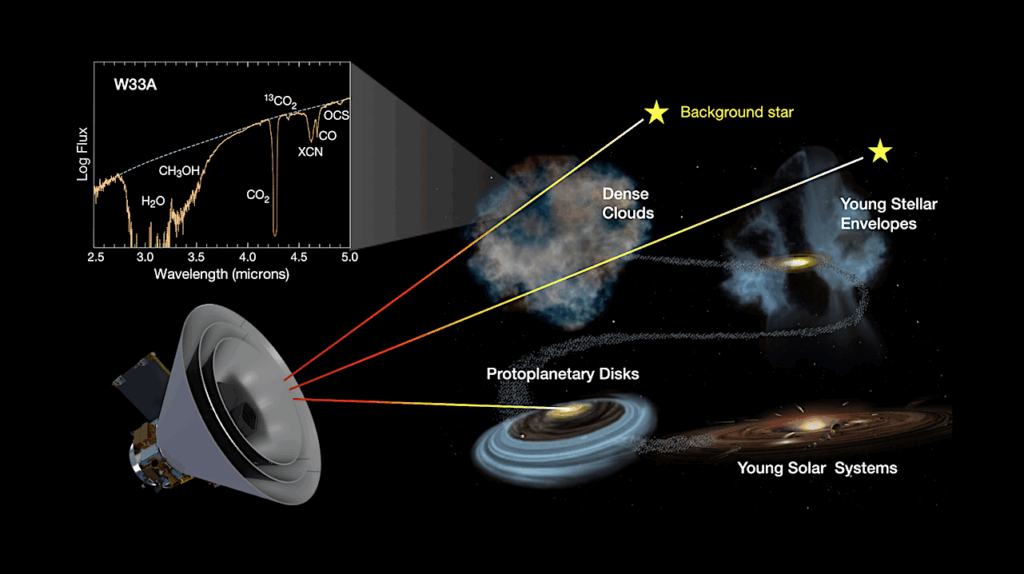Detection And Chemical Modelling Of Complex Prebiotic Molecule Cyanamide In The Hot Molecular Core G31.41+0.31
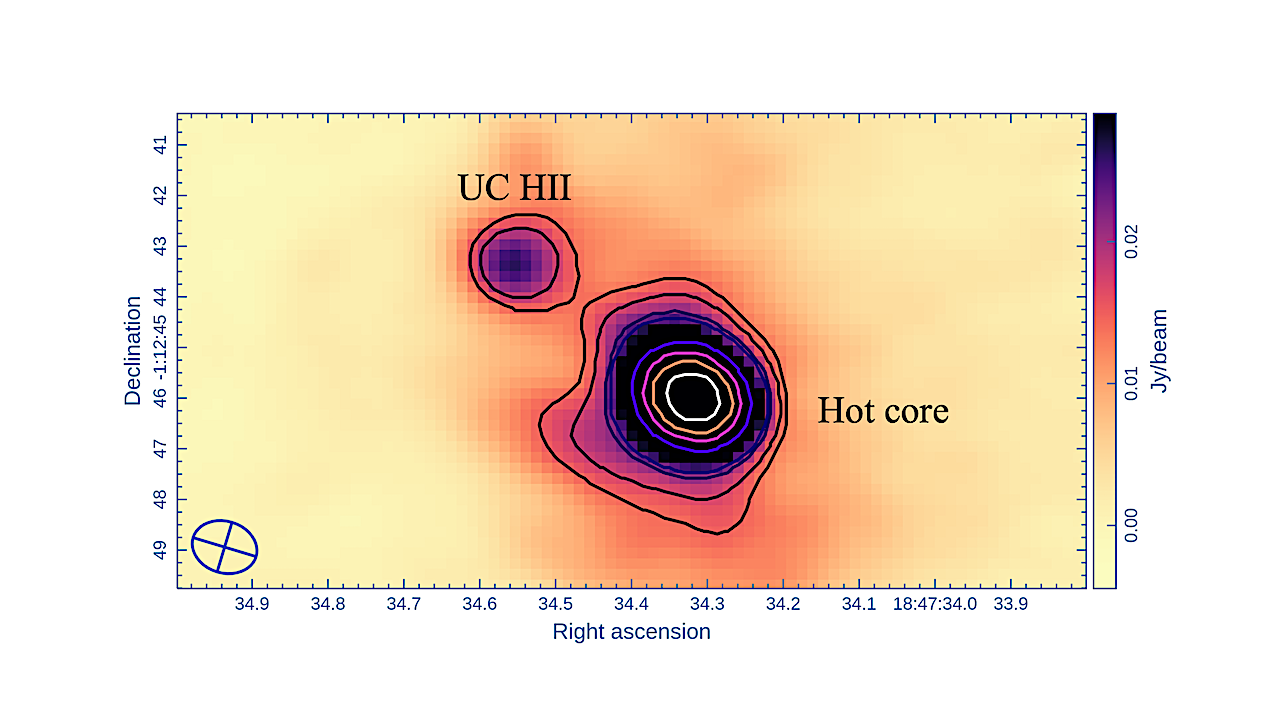
In the interstellar medium (ISM), the complex prebiotic molecule cyanamide (NH2CN) plays a key role in producing adenine (C5H5N5), purines (C5H4N4), pyrimidines (C4H4N2), and other biomolecules via a series of reactions.
Therefore, studying the emission lines of NH2CN is important for understanding the hypothesis of the pre-solar origin of life in the universe. We present the detection of the rotational emission lines of NH2CN with vibrational states v = 0 and 1 towards the hot molecular core G31.41+0.31 using the high-resolution twelve-meter array of Atacama Large Millimeter/Submillimeter Array (ALMA) band 3. The estimated column density of NH2CN towards G31.41+0.31 using the local thermodynamic equilibrium (LTE) model is (7.21±0.25)×1015 cm−2 with an excitation temperature of 250±25 K.
The abundance of NH2CN with respect to H2 towards G31.41+0.31 is (7.21±1.46)×10−10. The NH2CN and NH2CHO column density ratio towards G31.41+0.31 is 0.13±0.02. We compare the estimated abundance of NH2CN with that of other hot cores and corinos and observed that the abundance of NH2CN towards G31.41+0.31 is nearly similar to that of the hot molecular core G358.93−0.03 MM1, the hot corinos IRAS 16293-2422 B, and NGC 1333 IRAS4A2.
We compute the two-phase warm-up chemical model of NH2CN using the gas-grain chemical code UCLCHEM, and after chemical modelling, we notice that the observed and modelled abundances are nearly similar. After chemical modelling, we conclude that the neutral-neutral reaction between NH2 and CN is responsible for the production of NH2CN on the grain surface of G31.41+0.31.
Arijit Manna, Sabyasachi Pal
Comments: Accepted for publication in ACS Earth and Space Chemistry
Subjects: Astrophysics of Galaxies (astro-ph.GA)
Cite as: arXiv:2401.12879 [astro-ph.GA] (or arXiv:2401.12879v1 [astro-ph.GA] for this version)
Submission history
From: Arijit Manna
[v1] Tue, 23 Jan 2024 16:17:09 UTC (1,841 KB)
https://arxiv.org/abs/2401.12879
Astrobiology,


